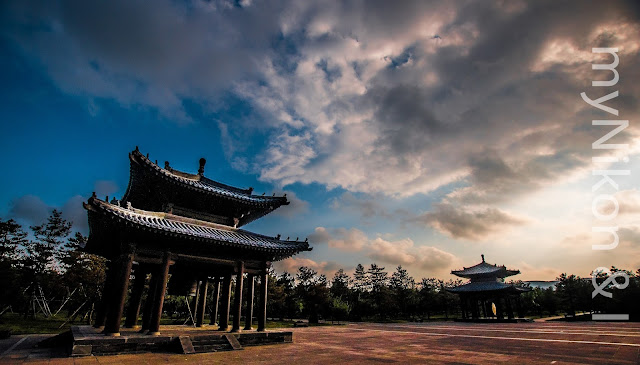When one visits Shanghai,
several top tourist attractions are a must. A walk down the Bund, taking a
river cruise down Huangpu River in the evening to enjoy the glittering Bund on
one side and the Shanghai Financial district with a good view of the Pearl Tower
on the other, not forgetting having a picture taken with the Pearl Tower and
shopping at the famous Nanjing Street.
Not many itineraries would include a visit to this 1700 years old ancient water town located approximately an hour ride from Shanghai and reportedly one of the four best preserved ancient water town in Shanghai.
Not many itineraries would include a visit to this 1700 years old ancient water town located approximately an hour ride from Shanghai and reportedly one of the four best preserved ancient water town in Shanghai.
Zhujiajiao (朱家角) or simply known as the Zhu Family
Settlement with a population of approximately 60,000 dates back all the way to
the Yuan Dynasty. She is also known as the `Pearl Stream’ because this little town will glimmer at night
among the landscapes of lakes, rivers and mountains.
When I did some research before my
trip to Shanghai, I was not particularly impressed with all the common
places that most tour agencies will take me and I was looking for something
more Chinese. The pictures of Zhujiajiao caught my attention with her canals,
rivers, sleepy willow trees and old ancient cottages. Hence, I gave specific
instructions and made specific request that I wanted to visit Zhujiajiao and
slot that into our itinerary somehow. Fortunately, our driver was accommodating
enough and willingly slot in a full day visit to this place on the last day at Shanghai before we made our way to the airport.
On arrival, my first impression of this place was rather disappointing. It was a Sunday and just like any other tourist attractions in China, especially this particular one which are rather popular with local tourists, this place was absolutely packed to the brim. There were so many people pushing along the narrow streets and jostling to get their pictures taken.
My first thoughts were to turn
back and go home. But having travelled more than an hour from Shanghai, there is no turning back. Braving the crowd, we made our
way carefully and rather `forcefully’ pushing back the crowd who constantly
walk right into your face, which happens so often in China with the local
tourist, to the nearest restaurant to have our lunch, to gather our composure,
to take a breather, to get over the initial shock and to plan the next course
of action.
The lunch break did help. We ordered some local dishes which turned up rather delicious though a little pricey (which is expected of a place this crowded and popular). With our stomach filled and I had my local beer, we were ready to do battle on the narrow streets and alleys, crowded with tourist and locals peddling their souvenirs.
Most of the cottages have been
turned into either cafes, restaurants, tea houses, snack shops or souvenir
shops, managed by the locals. I must say that this place is overly
commercialised and very touristy. If we had not stay longer till the evening
when most of the crowd left, I would not rank this place as a place that I
would enjoy but enjoy I did as the day drew to a close.
One of the best way to avoid the
crowd and to get an introduction of the place and some of orientation as to
where to go for a walk would be to take a boat ride. They offered several routes
with different prices. We took the cheapest which amounted to RMB30 per person
covering 4 destinations, since there were 6 of us and the journey lasted
approximately 20 minutes. It was short but was also the most enjoyable 20
minutes as our boat went into narrow canals, lined by sleepy willow trees with
their leaves hanging over the water and ancient old cottages lining both side
of the canal. I began to enjoy and appreciate the true beauty of this quaint
ancient water town.
Towards the evening, as the sun sets and her rays dimmed, and as the lights of the many cottages came on and the crowd leaves, as the temperature cooled down, the smell of spring was refreshing.
This is the best moment to savour
the true beauty and charm of this 1700 years old water town. Walking down the
now almost deserted alleys, a sense of serenity and tranquillity descended upon
place, which hours ago was bustling with hundreds if not thousands of people,
squeezing among themselves through these same streets and alleys.
Soon, it was time for us to leave
this place to catch our flight back to Beijing but I leave with a sense of satisfaction that Zhujiajiao
has not disappointed me. Although this place, like some many other places in China, has been overly commercialised, I still had that
opportunity, for a short moment in time, to experience and to see her in her
natural serenity and charm.
































